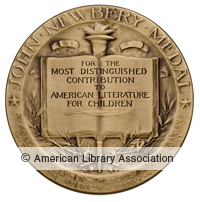Have only made 7 of the 25 so far this year.
 |
| Bulla, 2021 |
- Julskinka (Christmas Ham). It doesn't count unless you cure it yourself. It once came out blue.
- Köttbullar (Meatballs). Still working to perfect the Impossible™ version.
- Limpa (Christmas rye Bread). You absolutely must have this with lever pastej, but its also great with just butter.
- Sil (Herring). Must have Akvavit to kill the taste. A proper smörgåsbord should have two kinds at least, but we usually made do with one.
- Akvavit. Must have Herring to kill the taste.
- Boiled Potatoes. Great with Sil and Akvavit. Alleged to go great on knäckebröd with butter and Kalvslyta.
- Kalvsylta (Jellied Veal). It's surprisingly easy to make. Keeps at least a year in the freezer.
- Lever Pastej (Liver Paté). Also surprisingly easy to make, if you have a grinder.
- Korv (Sausage). Two kinds in some years.
- Spare Ribs. More than once these were forgotten in the oven.
- Dopp i gryta (Dip in the pot). You dip some knäckebröd into boiling ham broth, then slather with butter. Matsos will work in a pinch.
- Ost (cheese). Västerbottens Ost, Bond Ost, Herrgardsost, Havarti and Swiss are all good.
- Rödkålsalat (red cabbage salad).
- Rödbetsalat (red beet salad).
- Inlagd gurka (picked cucumber).
- Jansson's frestelse (Jansson's temptation). Creamed potatoes, anchovies and onions. Gonna try fermented tofu instead of anchovies this year.
- Shrimp omelet.
- Rotmoss (Mashed rutabagas). This used to be stuff that people in Sweden ate every day *other* than Christmas, because they could afford it. Now we never have it except at Christmas, because we can afford it.
- Lingonsylt (lingonberry sauce).
- Öl (beer). But never Swedish beer. Have dubbed this year's batch "Cipher Ale".
- Glögg (spiced wine). Dad made it with 1 part vodka to one part wine.
- Coffee.
- Pepparkakar (Ginger Cookies). You can make a wish on them- if the cookie breaks into 3 pieces you get your wish. If some other number, you only get your wish if you wished for pepparkakor
- Bulla (Cardamon cinnamon coffee b
read). Comes out differently for every baker. There's also the saffron and almond paste variety made for Dec. 13 and sometimes saved for Christmas. - Sand formar (Sand cookies). A ground almond cookie shell that you put vanilla pudding and a mandarin orange inside.
- Jam cookies.
- Many other cookies. Log cookies. Broomstick cookies. Chocolate chip cookies. Macaroons. Knäck. Our seasonal output peaked at 10 dozen dozen.
- Donuts. With the next door neighbors.
- Lutfisk. Not a figment of Garrison Kiellor's imagination, but only Dad liked it, with cream sauce, peas and allspice.
I know that's more than 25, but did I mention that Dad made the glögg with one part vodka to one part wine?












